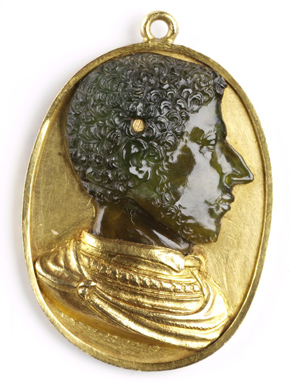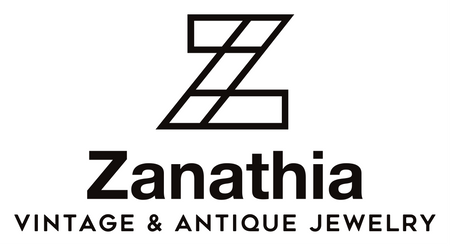
Antique cameos courtesy of Zanathia Jewelry
Historically, cameos have been used for various purposes throughout different regions since the B.C Era. In ancient times, the cameo was used to represent sentimental meanings in the form of carved portraits on hard gemstones. In Ancient Greece during the Hellenistic Age and Ancient Rome, intricately carved stone or glass cameos showcased admirable artistry in the form of large earrings, signet rings, and terrific cups. The earliest cameos were made from stone. In Ancient Egypt, early cameo examples include the carving of figurines into small rocks for sentimental eventful dates. During the Renaissance Era in the 15th and 16th centuries, shell cameos carved from mussel or cowry were popularized collectibles. Other common natural materials used to create cameos were onyx, agate, coral, and carnelian.
Cameos have been historically linked to designs representing mythological stories or Roman and Greek rulers/dignitaries during ancient times. During the 19th century, young women completing Grand Tours of Europe began collecting cameos as souvenirs. Two of the most popular souvenir cameo designs during this time were created from colorful petrified lava for highly detailed carvings and portraits of women carved into black jet stone or glass, as shown above, during the Victorian Era (c.1837-1901). However, cameos were extremely popular before Queen Victoria's reign. Stone engraving was a highly encouraging art throughout Europe, and successful cameo engraving schools were created in Rome to study the craft. Many skilled cameo artisans in Europe traveled to other countries, such as the U.S, to set up shops for their trade. People would commission the artisan to create sentimental cameo portraits.

(Renaissance Era cameo of Alessandro de Medici, Duke of Florence. Created from carved green chalcedony in a gold setting by Domenico di Polo. Victoria and Albert Museum Collection. Noble dignitaries were common subjects for ancient cameo art)

(Renaissance Era Cameo with Black Woman, Workshop of Girolamo Miseroni. Italy, c. 1560's.)
Many Georgian and Victorian Era cameos closely resemble original ancient pieces due to the fascination and keen interest in ancient art. Many Italian artisans set up shops across Europe and the U.S and crafted cameos in antique styles for customers. In the earlier part of the Victorian Era, also known as the Romantic Period, ancient cameo brooches/pins were commonly worn. One of the main factors for authenticating an actual old cameo from an antique 19th-century revival piece is examining the materials used. If a cameo piece is created from lava, it is most likely from the Victorian Era. If a cameo contains silver or gold electroplating, it was built after 1805, when Italian chemist Luigi Brugnatelli invented the method.


(Antique Victorian Era Hand Carved Carnelian Shell and Brass Lady Cameo, Zanathia Collection)
While cameos were often synonymous with a specific status level in society or expensive artistic designs of noble importance, the 20th century introduced more mass-produced mainstream designs. Replicas of antique cameo styles became popular and inexpensive for everyday wear. Today, cameos are still highly sought-after collectibles showcased in various ways. Modern designers often take substantial inspiration from antique historical cameo art, which includes the reproduction of Roman, Greek, and Victorian Era designs. Thousands of years later, the cameo effect is still loved and fascinating in modern times.

